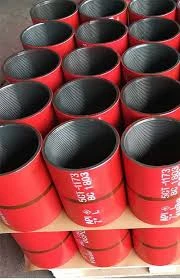- Afrikaans
- Albanian
- Amharic
- Arabic
- Armenian
- Azerbaijani
- Basque
- Belarusian
- Bengali
- Bosnian
- Bulgarian
- Catalan
- Cebuano
- Corsican
- Croatian
- Czech
- Danish
- Dutch
- English
- Esperanto
- Estonian
- Finnish
- French
- Frisian
- Galician
- Georgian
- German
- Greek
- Gujarati
- Haitian Creole
- hausa
- hawaiian
- Hebrew
- Hindi
- Miao
- Hungarian
- Icelandic
- igbo
- Indonesian
- irish
- Italian
- Japanese
- Javanese
- Kannada
- kazakh
- Khmer
- Rwandese
- Korean
- Kurdish
- Kyrgyz
- Lao
- Latin
- Latvian
- Lithuanian
- Luxembourgish
- Macedonian
- Malgashi
- Malay
- Malayalam
- Maltese
- Maori
- Marathi
- Mongolian
- Myanmar
- Nepali
- Norwegian
- Norwegian
- Occitan
- Pashto
- Persian
- Polish
- Portuguese
- Punjabi
- Romanian
- Russian
- Samoan
- Scottish Gaelic
- Serbian
- Sesotho
- Shona
- Sindhi
- Sinhala
- Slovak
- Slovenian
- Somali
- Spanish
- Sundanese
- Swahili
- Swedish
- Tagalog
- Tajik
- Tamil
- Tatar
- Telugu
- Thai
- Turkish
- Turkmen
- Ukrainian
- Urdu
- Uighur
- Uzbek
- Vietnamese
- Welsh
- Bantu
- Yiddish
- Yoruba
- Zulu
casing and tubing connections
Casing and Tubing Connections A Comprehensive Overview
In the oil and gas industry, effective casing and tubing connections are critical to ensuring the integrity and safety of drilling operations. The casing serves as a protective barrier, stabilizing the borehole and preventing the collapse of surrounding formations, while the tubing acts as the conduit for oil, gas, or water to flow to the surface. Understanding the various types of connections between these components is essential for engineers and technicians involved in drilling operations.
Casing connections are designed to withstand the high-pressure environments encountered in deeper wells. Common connection types include threaded, welded, and slip-on connections. Threaded connections are the most widely used due to their ease of installation and ability to accommodate thermal expansion. These connections typically utilize a pin-and-box design, where one end of the pipe (the pin) is threaded, and the other end (the box) is made to receive the pin's threads. Proper torque application is crucial to ensure a tight seal and to prevent leaks.
Welded casing connections, while less common, offer enhanced strength and reduce the risk of leaks because they form a permanent joint. However, their installation demands a higher level of skill and precision, making them less favorable in certain applications. Slip-on connections, on the other hand, are generally used in temporary applications where speed and ease of installation are prioritized over permanent joints.
casing and tubing connections

When it comes to tubing connections, the focus shifts to managing the production of hydrocarbons. Tubing is often connected using similar threaded designs, but specific variations, such as the use of couplings, can further enhance the integrity of the joint. In high-pressure applications, the use of premium connections is increasingly favored. These connections are engineered to provide superior resistance to wear, corrosion, and pressure, often incorporating advanced materials and coatings.
One significant aspect of both casing and tubing connections is the importance of proper inspection and maintenance
. Regular integrity checks can help identify potential issues such as thread wear, corrosion, or fatigue, which could jeopardize the overall safety of the drilling operation. Non-destructive testing methods, such as ultrasonic or magnetic particle inspection, are commonly employed to assess the condition of connections without damaging the components.The advent of technology has spurred considerable advancements in casing and tubing connections. Innovations in design, materials, and coatings have enhanced the durability and reliability of these vital components. For instance, the introduction of hybrid connections, which blend traditional threaded designs with welding techniques, is gaining traction. These hybrids offer the flexibility of a threaded joint while benefiting from the strength of welded connections, potentially revolutionizing the way drilling operations are conducted.
In summary, casing and tubing connections are fundamental to the success of oil and gas operations. As the industry continues to evolve, understanding the nuances of these connections, from design principles to maintenance practices, is vital. Engineers and technicians must stay informed about emerging technologies and methods to ensure that casing and tubing systems maintain their structural integrity under the demanding conditions of drilling and production environments. By prioritizing the quality and reliability of these connections, the industry can mitigate risks, enhance production efficiency, and ultimately contribute to the safe extraction of hydrocarbons from beneath the Earth's surface.
-
Tubing Pup Joints: Essential Components for Oil and Gas OperationsNewsJul.10,2025
-
Pup Joints: Essential Components for Reliable Drilling OperationsNewsJul.10,2025
-
Pipe Couplings: Connecting Your World EfficientlyNewsJul.10,2025
-
Mastering Oilfield Operations with Quality Tubing and CasingNewsJul.10,2025
-
High-Quality Casing Couplings for Every NeedNewsJul.10,2025
-
Boost Your Drilling Efficiency with Premium Crossover Tools & Seating NipplesNewsJul.10,2025







